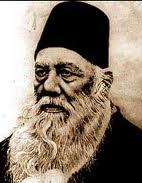 After the War of Independence 1857, British believed that the Muslims were responsible for the anti-British uprising; therefore they made them the subject of ruthless punishments and revenge. In order to convince the that Muslims alone wre not responsible for the war of 1857, Hindus and other nations in India also participated in the war Aligarh movement was started. The movement was lead by Sir Syed Ahmed Khan. In order to clear the doubts from the minds of the British about Muslims Sir Syed Ahmed Khan wrote a pamphlet "The Causes Of Indian Revolt". Its most significant achievement was the establishment of Muhammadan Anglo-Oriental College at Aligarh, which later became Aligarh Muslim University. Also it lead the opening of minds of Muslims towards Western literature, science and technology.
After the War of Independence 1857, British believed that the Muslims were responsible for the anti-British uprising; therefore they made them the subject of ruthless punishments and revenge. In order to convince the that Muslims alone wre not responsible for the war of 1857, Hindus and other nations in India also participated in the war Aligarh movement was started. The movement was lead by Sir Syed Ahmed Khan. In order to clear the doubts from the minds of the British about Muslims Sir Syed Ahmed Khan wrote a pamphlet "The Causes Of Indian Revolt". Its most significant achievement was the establishment of Muhammadan Anglo-Oriental College at Aligarh, which later became Aligarh Muslim University. Also it lead the opening of minds of Muslims towards Western literature, science and technology.
Sir Syed Ahmed Khan | Aligarh Movement
16 Oct 2011
By
Admin
 After the War of Independence 1857, British believed that the Muslims were responsible for the anti-British uprising; therefore they made them the subject of ruthless punishments and revenge. In order to convince the that Muslims alone wre not responsible for the war of 1857, Hindus and other nations in India also participated in the war Aligarh movement was started. The movement was lead by Sir Syed Ahmed Khan. In order to clear the doubts from the minds of the British about Muslims Sir Syed Ahmed Khan wrote a pamphlet "The Causes Of Indian Revolt". Its most significant achievement was the establishment of Muhammadan Anglo-Oriental College at Aligarh, which later became Aligarh Muslim University. Also it lead the opening of minds of Muslims towards Western literature, science and technology.
After the War of Independence 1857, British believed that the Muslims were responsible for the anti-British uprising; therefore they made them the subject of ruthless punishments and revenge. In order to convince the that Muslims alone wre not responsible for the war of 1857, Hindus and other nations in India also participated in the war Aligarh movement was started. The movement was lead by Sir Syed Ahmed Khan. In order to clear the doubts from the minds of the British about Muslims Sir Syed Ahmed Khan wrote a pamphlet "The Causes Of Indian Revolt". Its most significant achievement was the establishment of Muhammadan Anglo-Oriental College at Aligarh, which later became Aligarh Muslim University. Also it lead the opening of minds of Muslims towards Western literature, science and technology.
Related Posts with thumbnails for bloggerblogger widgets
Continue reading..
Swami Vivekananda
By
Admin
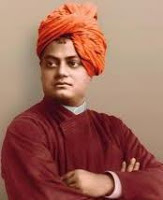 The original name of Swami Vivekananda (1863 – 1902) was Narendranath Dutta. Hewas the chief disciple of the Ramakrishna Paramahansa and the founder of the Ramakrishna Math and the Ramakrishna Mission. He introduced of Hindu philosophies of Vedanta and Yoga to the "Western" World, mainly in America and Europe and is also credited in bringing Hinduism to the status of a major world religion during the end of the 19th century. He is considered to be a major force in the revival of Hinduism in modern India. He is best known for his inspiring speech beginning with "Sisters and Brothers of America",through which he introduced Hinduism at the Parliament of the World's Religions at Chicago in 1893.
The original name of Swami Vivekananda (1863 – 1902) was Narendranath Dutta. Hewas the chief disciple of the Ramakrishna Paramahansa and the founder of the Ramakrishna Math and the Ramakrishna Mission. He introduced of Hindu philosophies of Vedanta and Yoga to the "Western" World, mainly in America and Europe and is also credited in bringing Hinduism to the status of a major world religion during the end of the 19th century. He is considered to be a major force in the revival of Hinduism in modern India. He is best known for his inspiring speech beginning with "Sisters and Brothers of America",through which he introduced Hinduism at the Parliament of the World's Religions at Chicago in 1893.
Related Posts with thumbnails for bloggerblogger widgets
Continue reading..
Annie Basant | The Theosophical Society of India | Indian Home Rule Movement
By
Admin
 The Theosophical Society was formed in New York, in 1875 by Helena Blavatsky and Henry Steel Olcott. In 1882, Olcott and Blavatsky moved to India and established the International Headquarters at Adyar, in Madras. Following were included in the Society's agenda.
The Theosophical Society was formed in New York, in 1875 by Helena Blavatsky and Henry Steel Olcott. In 1882, Olcott and Blavatsky moved to India and established the International Headquarters at Adyar, in Madras. Following were included in the Society's agenda.
1. To form a nucleus of the universal brotherhood of humanity without distinction of race, creed, sex, caste, or colour.
2. To encourage the study of comparative religion, philosophy, and science.
3. To investigate the unexplained laws of nature and the powers latent in man.
In 1893, Annie Basant joined Theosophical Society of India. The soceity became more prominent when Annie Basant became the President of the Theosophical Society in 1907. As part of her Theosophy-related work, she helped Madan Mohan Malayia to establish the Central Hindu College, which later developed into Banaras Hindu University. She joined the Indian National Congress later. When World War I broke out in 1914 she helped launch the Home Rule League to campaign for democracy in India and dominion status within the Empire. This lead to her election as president of the India National Congress in 1917. After the war she continued to campaign for Indian independence and for the causes of Theosophy until her death in 1933.
Related Posts with thumbnails for bloggerblogger widgets
Continue reading..
Jyotiba Phule and Savitribai Phule
By
Admin
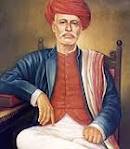 Mahatma Jotiba Govindrao Phule (1827 — 1890) was an activist and social reformer from Maharashtra. Jotiba Phule and his wife Savitribai Phule were the pioneer of women's education in India. His remarkable influence was apparent in fields like education, agriculture, caste system, women and widow upliftment and removal of untouchability. He is most known for his efforts to educate women and the lower castes as well as the masses. He, after educating his wife, opened a school for girls in India in August 1848. This was the second girls school in India.
Mahatma Jotiba Govindrao Phule (1827 — 1890) was an activist and social reformer from Maharashtra. Jotiba Phule and his wife Savitribai Phule were the pioneer of women's education in India. His remarkable influence was apparent in fields like education, agriculture, caste system, women and widow upliftment and removal of untouchability. He is most known for his efforts to educate women and the lower castes as well as the masses. He, after educating his wife, opened a school for girls in India in August 1848. This was the second girls school in India.
Related Posts with thumbnails for bloggerblogger widgets
Continue reading..
Ishwar Chandra Vidyasagar
14 Oct 2011
By
Admin
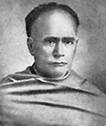 Ishwar Chandra Vidyasagar (1820 - 1891) was a prominent figure of the Bengal Renaissance. Vidyasagar was a philosopher, academic, writer, printer, publisher, entrepreneur, reformer, and philanthropist. He received the title "Vidyasagar" ("Ocean of knowledge") from the Calcutta Sanskrit College, where he graduated, due to his excellent performance in Sanskrit studies and philosophy. Ishwar Chandra was a brilliant student and in 1841, at the age of twenty one years, he joined the Fort William College as a head of the Sanskrit department. Vidyasagar vigorously promoted the idea that regardless of their caste, both men and women should receive the best education.
Ishwar Chandra Vidyasagar (1820 - 1891) was a prominent figure of the Bengal Renaissance. Vidyasagar was a philosopher, academic, writer, printer, publisher, entrepreneur, reformer, and philanthropist. He received the title "Vidyasagar" ("Ocean of knowledge") from the Calcutta Sanskrit College, where he graduated, due to his excellent performance in Sanskrit studies and philosophy. Ishwar Chandra was a brilliant student and in 1841, at the age of twenty one years, he joined the Fort William College as a head of the Sanskrit department. Vidyasagar vigorously promoted the idea that regardless of their caste, both men and women should receive the best education.
Related Posts with thumbnails for bloggerblogger widgets
Continue reading..
Prarthana Samaj | Atmaram Pandurang
12 Oct 2011
By
Admin
Prarthana Samaj or "Prayer Society" was a movement for religious and social reform in Maharashtra, established in 1867. It was an off-shoot of Brahmo Samaj. Sir Ramakrishna Gopal Bhandarkar, Dr. Atmaram Pandurang, Narayan Chandavarkar and Justice Mahadev Govinda Ranade were the people behind it. It critically examined the relations between contemporary social and cultural systems and religious beliefs and gave priority to social reforms. Their comprehensive reform movement has led many impressive projects of cultural change and social reform in Western India, such as the improvement of the lot of women and depressed classes, an end to the caste system, abolition of child marriages and infanticide, educational opportunites for women, and remarriage of widows.
Related Posts with thumbnails for bloggerblogger widgets
Continue reading..
Vinoba Bhave
11 Oct 2011
By
Admin
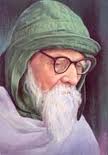 Vinoba Bhave (1895 - 1982) was a freedom fighter and a spiritual teacher. He is best known for Bhoodan Andolan (land gift movement). He is considered as a National Teacher of India and the spiritual successor of Mahatma Gandhi. He was associated with Mahatma Gandhi in the Indian independence movement. In 1932 he was sent to jail by the British, where he wrote his famous book,"Talks on the Gita". In 1940 he was chosen by Gandhi to be the first Individual Satyagrahi against the British rule. In 1958 Vinoba was the first recipient of the international Ramon Magsaysay Award for Community Leadership. He was awarded the Bharat Ratna posthumously in 1983.
Vinoba Bhave (1895 - 1982) was a freedom fighter and a spiritual teacher. He is best known for Bhoodan Andolan (land gift movement). He is considered as a National Teacher of India and the spiritual successor of Mahatma Gandhi. He was associated with Mahatma Gandhi in the Indian independence movement. In 1932 he was sent to jail by the British, where he wrote his famous book,"Talks on the Gita". In 1940 he was chosen by Gandhi to be the first Individual Satyagrahi against the British rule. In 1958 Vinoba was the first recipient of the international Ramon Magsaysay Award for Community Leadership. He was awarded the Bharat Ratna posthumously in 1983.
Related Posts with thumbnails for bloggerblogger widgets
Continue reading..
Rabindranath Tagore
By
Admin
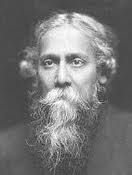 Rabindranath Tagore (1861 – 1941) was a renowned Indian poet, philosopher and artist from Bengal. He became the first non-European Nobel laureate by earning the 1913 Prize in Literature for Gitanjali. Till 1913 he was little known outside of the Calcutta area, and not known at all outside of India. During that period his short stories were published monthly in a friend's magazine and he even played the lead role in a few of the public performances of his plays. In 1912, on the way over to England by Sea,he began translating, for the first time, his latest selections of poems, Gitanjali, into English. Tagore's one friend in England, a famous artist he had met in India, Rothenstein, learned of the translation, and asked to see it. After reading the notebook, the painter could not believe his eyes. The poems were incredible. He called his friend, W.B. Yeats, and finally talked Yeats into looking at the hand scrawled notebook. Yeats was enthralled and rest was history. Less than a year later, in 1913, Rabindranath received the Nobel Prize for literature.
Rabindranath Tagore (1861 – 1941) was a renowned Indian poet, philosopher and artist from Bengal. He became the first non-European Nobel laureate by earning the 1913 Prize in Literature for Gitanjali. Till 1913 he was little known outside of the Calcutta area, and not known at all outside of India. During that period his short stories were published monthly in a friend's magazine and he even played the lead role in a few of the public performances of his plays. In 1912, on the way over to England by Sea,he began translating, for the first time, his latest selections of poems, Gitanjali, into English. Tagore's one friend in England, a famous artist he had met in India, Rothenstein, learned of the translation, and asked to see it. After reading the notebook, the painter could not believe his eyes. The poems were incredible. He called his friend, W.B. Yeats, and finally talked Yeats into looking at the hand scrawled notebook. Yeats was enthralled and rest was history. Less than a year later, in 1913, Rabindranath received the Nobel Prize for literature.
Related Posts with thumbnails for bloggerblogger widgets
Continue reading..
Dayanand Saraswati | Founder of Arya Samaj
7 Oct 2011
By
Admin
Maharishi Dayanand Saraswati (1824 – 1883) was a prominent Hindu religious scholar, reformer, and founder of Hindu reform movement, Arya Samaj. He was the first to give the call for Swarajya – "India for Indians" – in 1876, later taken up by Lokmanya Tilak. He worked towards reviving Vedic ideologies and denounced the idolatry and ritualistic worship prevalent in Hinduism at that time.
Related Posts with thumbnails for bloggerblogger widgets
Continue reading..
Raja Ram Mohan Roy | Social Reformer
6 Oct 2011
By
Admin
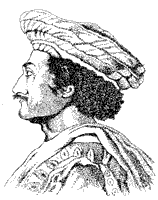 A Bengali by birth, Raja Ram Mohan Roy (1772 - 1833) triggered the religious, social, cultural and educational reforms in India. He was a pioneer in show casing the lines of progress of Indian society under British rule. He challenged the traditional Hindu culture and initiated the Bangal renaissance. The social and cultural awakening of India started with Ram Mohan Roy and through his Brahma Samaj. Because of all this he is considered as the first modern man of India.
Below given are the major events in his life
A Bengali by birth, Raja Ram Mohan Roy (1772 - 1833) triggered the religious, social, cultural and educational reforms in India. He was a pioneer in show casing the lines of progress of Indian society under British rule. He challenged the traditional Hindu culture and initiated the Bangal renaissance. The social and cultural awakening of India started with Ram Mohan Roy and through his Brahma Samaj. Because of all this he is considered as the first modern man of India.
Below given are the major events in his life
Raja Ram Mohan Roy - Social Reformer
1. Ram Mohan Roy learned English from the English missionary William Carey who settled in India to translate, publish and distribute the Bible in Indian languages and propagate Christianity to the Indian peoples.
Related Posts with thumbnails for bloggerblogger widgets
Continue reading..



